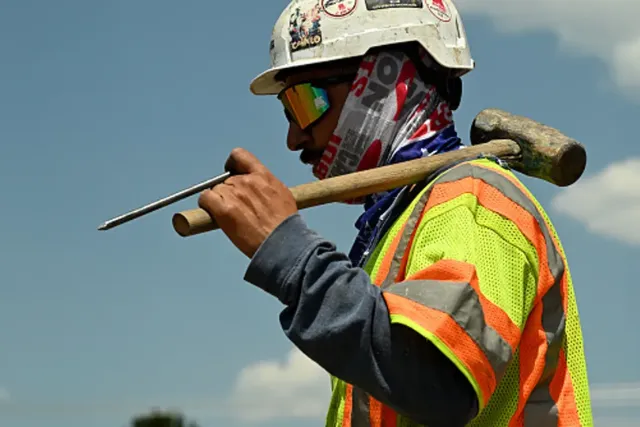
In the shadows of America’s cranes and unfinished towers, a silent crisis threatens the nation’s ambitious buildout: too few people left to build it.

“Despite billions in infrastructure spending, a housing crisis demanding millions of new units and booming demand for data centers and clean energy facilities, the U.S. construction industry finds itself paralyzed by a labor shortage that isn’t just cyclical — it’s structural,” writes Atlanta-based construction pro Ratan Lal.
So, where are the workers? And more importantly, how do we get them back?
Construction’s once-strong talent pipeline has dried up. “Vocational education has been stripped from many public schools,” Lal notes. Immigration, historically the backbone of the trades, is locked in “policy gridlock.” Meanwhile, contractors haven’t cracked the code for attracting a new generation that thinks differently about work and life.
“Today, about 245,000 construction jobs remain unfilled,” Lal says, citing U.S. Bureau of Labor Statistics data. With nearly a quarter of workers over 55, retirements are draining knowledge faster than it can be replaced. Automation helps, but only so much.
One hard truth, according to Lal: “Immigration reform is not just a border issue, it’s a construction issue.” A quarter of the workforce is foreign-born — even more in concrete, roofing, and framing. Yet outdated visa caps and complex pathways leave skilled immigrants waiting in the wings.

“If the U.S. is serious about building back better, it must first build smarter immigration systems: trade-specific visas, cross-border credentialing and partnerships with vocational schools abroad,” Lal writes.
Another missed opportunity: diversity. “Only 11% of construction workers are women. Black workers make up about 5%,” Lal notes. “LGBTQ+ representation and support remain almost invisible.” He calls out the myth that people don’t want construction jobs: “It ignores the lived reality of millions who were never welcomed in the first place.”
Instead, Lal imagines an industry open to “working mothers, second-chance citizens, rural talent, neurodivergent problem-solvers and veterans.” But that vision needs more than slogans — it demands investment in community college programs, affordable childcare, mentorship and real pay equity.
“When markets tighten, training is the first to go,” he warns. That’s why the focus must shift “from cost-first to capacity-first planning.” He wants public agencies to require workforce development on every project — and for private developers to tie ROI to long-term labor investment.
“We need to treat skilled labor not as a commodity, but a strategic asset,” Lal argues.
He leaves the industry with a challenge: rethink the blueprint entirely. Immigration reform is workforce development. DEI isn’t a side note — it’s a labor expansion plan. Labor policy must look beyond the next bid. And cultural change isn’t optional.
“If we do this right, construction could become the beating heart of inclusive American growth,” Lal writes. “Because the question isn’t just ‘Where are the workers?’ It’s ‘What are we doing to bring them back?’”
Originally reported by Ratan Lal in Construction Dive.